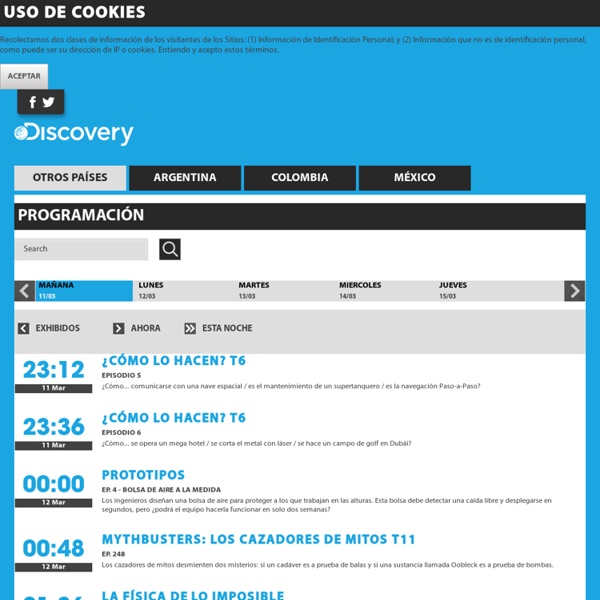



http://www.latam.discovery.com/
Álbumes web de Picasa - diego ospina One account. All of Google. Sign in to continue to Picasa Web Albums Find my account Home 6 Insane Discoveries That Science Can't Explain We like to feel superior to the people who lived centuries ago, what with their shitty mud huts and curing colds by drilling a hole in their skulls. But we have to give them credit: They left behind some artifacts that have left the smartest of modern scientists scratching their heads. For instance, you have the following enigmas that we believe were created for no other purpose than to fuck with future generations. Elton John Grooveshark - Free Music Streaming Online Radio and Internet Streaming. Music Popular Music Music Videos Online Radio Stations Community Music <a href=" title="Grooveshark"><img src=" alt="Grooveshark" /></a> <h2>Listen to free music online.
Shotwell Our popular photo organizer for the GNOME desktop. Import Photos Easily import photos from folders or from your digital camera or phone. Organize Shotwell automatically groups photos taken at the same time. Scientists create hottest substance on Earth Stuart Gary for ABC Science Online Posted Tue 14 Jun 2011, 12:37pm AEST Scientists using the world's largest atom smasher have made some of the hottest and densest matter ever achieved on Earth. Walking cactus discovered in China Fossils of a 10-legged wormy creature that lived 520 million years ago may fill an important gap in the history of the evolution of insects, spiders and crustaceans. Skip to next paragraph Subscribe Today to the Monitor Click Here for your FREE 30 DAYS ofThe Christian Science MonitorWeekly Digital Edition The so-called walking cactus belongs to a group of extinct worm-like creatures called lobopodians that are thought to have given rise to arthropods. Spiders and other arthropods have segmented bodies and jointed limbs covered in a hardened shell.
Scientist Beams Up a Real 'Star Trek' Tricorder Starships, warp speed, transporters, phasers. Think "Star Trek" technology is only the stuff of fiction? Think again. Attractive Italian Viaduct Has Wind Turbines Built In A new bridge concept incorporates wind and solar energy into its design, generating 40 million kilowatt-hours per year — and looking pretty slick to boot. The Solar Wind concept would use the space between an existing viaduct in southern Italy to install 26 wind turbines, which designers Francesco Colarossi, Giovanna Saracino and Luisa Saracino say could provide 36 million kilowatt hours of electricity every year. The design team conceived the Solar Wind project for a contest that aims to repurpose some old, unused viaducts near Calabria, a region in the toe of Italy. It would cost about $55 million to demolish the viaducts, so town officials held a contest for proposals that would re-use them in an environmentally friendly way. The wind turbine bridge took second place.
Unseen Titanic The wreck sleeps in darkness, a puzzlement of corroded steel strewn across a thousand acres of the North Atlantic seabed. Fungi feed on it. Weird colorless life-forms, unfazed by the crushing pressure, prowl its jagged ramparts. Glow kitties cat Just in time for Halloween, a team of scientists has introduced a new breed of kittens that glow in the dark. They’re cute, cuddly and bright, with fur that shines yellow-green when you turn off the light. Stop fetishizing the scientific paper: Our invited Comment in Nature courtesy Nature If there’s one consistent lesson of covering retractions, it’s that science doesn’t stop when researchers publish a paper. But what also seems true is that once a paper is published, lots of people — authors and editors, in particular — are often reluctant to say just what’s happened next, particularly if it casts the study or the journal in a negative light. Some of this is understandable, given the weight given papers by tenure committees and granting agencies. Still, Retraction Watch readers will not be surprised to know we’d like that to change, so when Nature asked us to contribute an end-of-the-year commentary, we decided to focus on post-publication peer review. In our piece, which appears this week, titled “The paper is not sacred,” we argue: